WTF is that?
Cashews, jellification and scobie dune – a catalogue of curiosities
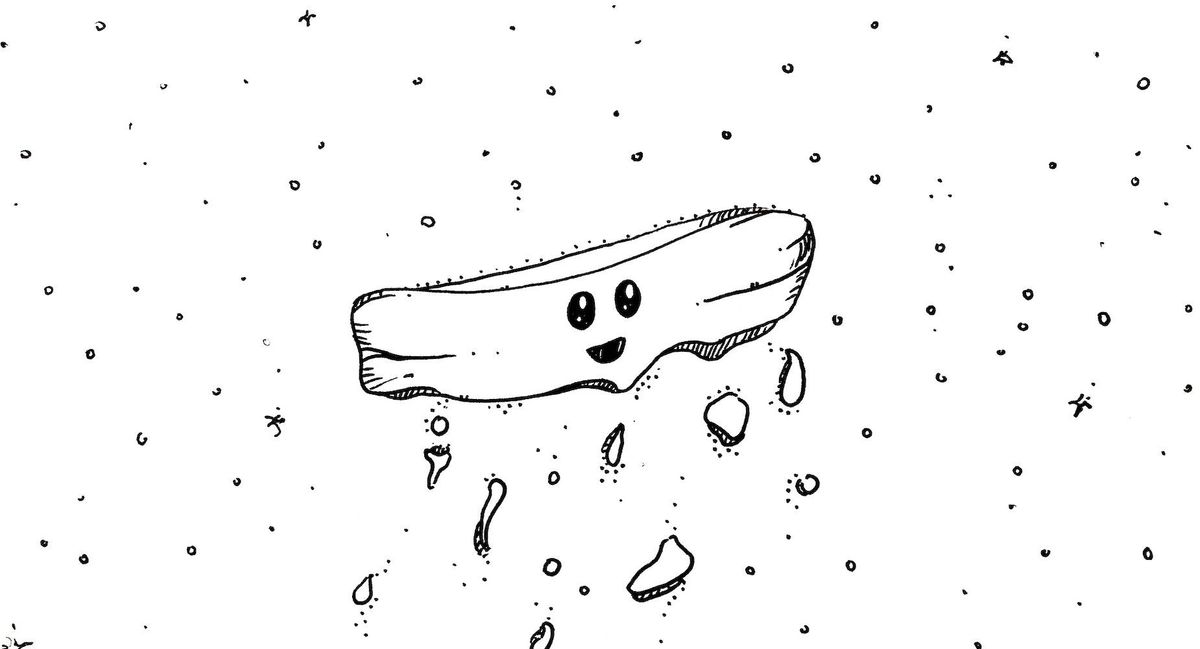
There is just so much we don’t know. We think we’re pretty au fait with the entirety of planet earth, because we have the internet. We scroll, we tap, we watch, we listen. But it’s fleeting, a mere skim. Even the scientists frequently have to admit that we really still know very little about a great many things. There are still pockets of surprise and strangeness, things alarming to find are real and arresting to see up close, strange squishy and gooey and poisonous things, things that seem more the domain of space and science fiction than run-of-the-mill actual reality.
Let’s hopscotch across this brief catalogue of strange and stranger things, drawing a line from the cashew, intersecting the jellyfish, and ending on “scobie dune”. WTF does all that mean? Read on. 👇
The cashew apple, and its companion, the nut
A few years ago I learned that not only did I not really know how most nuts grow, but, also: that the cashew nut grows out of the bottom of the cashew apple, squishing its way out like a fat little slug cradling itself. I have yet to share this fact with someone who just says, “Yeah, of course. I know that.” Most people cock their head, look at me through their eyebrows, and ask for photographic proof.
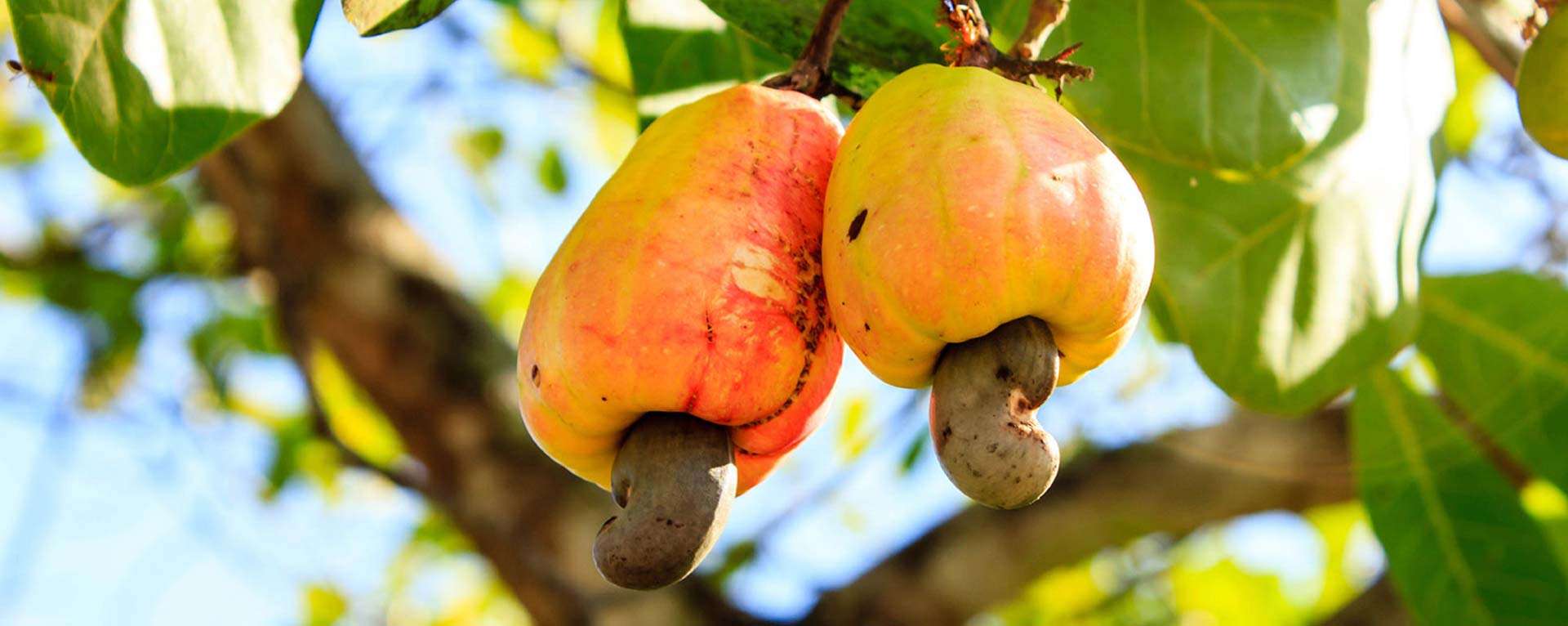
The apple itself is also edible, but highly perishable, so not often consumed outside countries of production, like Brazil. In India, the apples are used to make the alcoholic drink feni.
Nothing about the cashew is as it seems; the whole thing is a masquerade. Cashew plants have spiralled leaves, the fruit is curved and the nut is folded in on itself. Everything twists and turns away from you. According to Julia Morton, author of Fruits of Warm Climates, “the true fruit of the tree is the cashew nut”. The cashew apple itself is technically an accessory fruit, or “pseudofruit”.
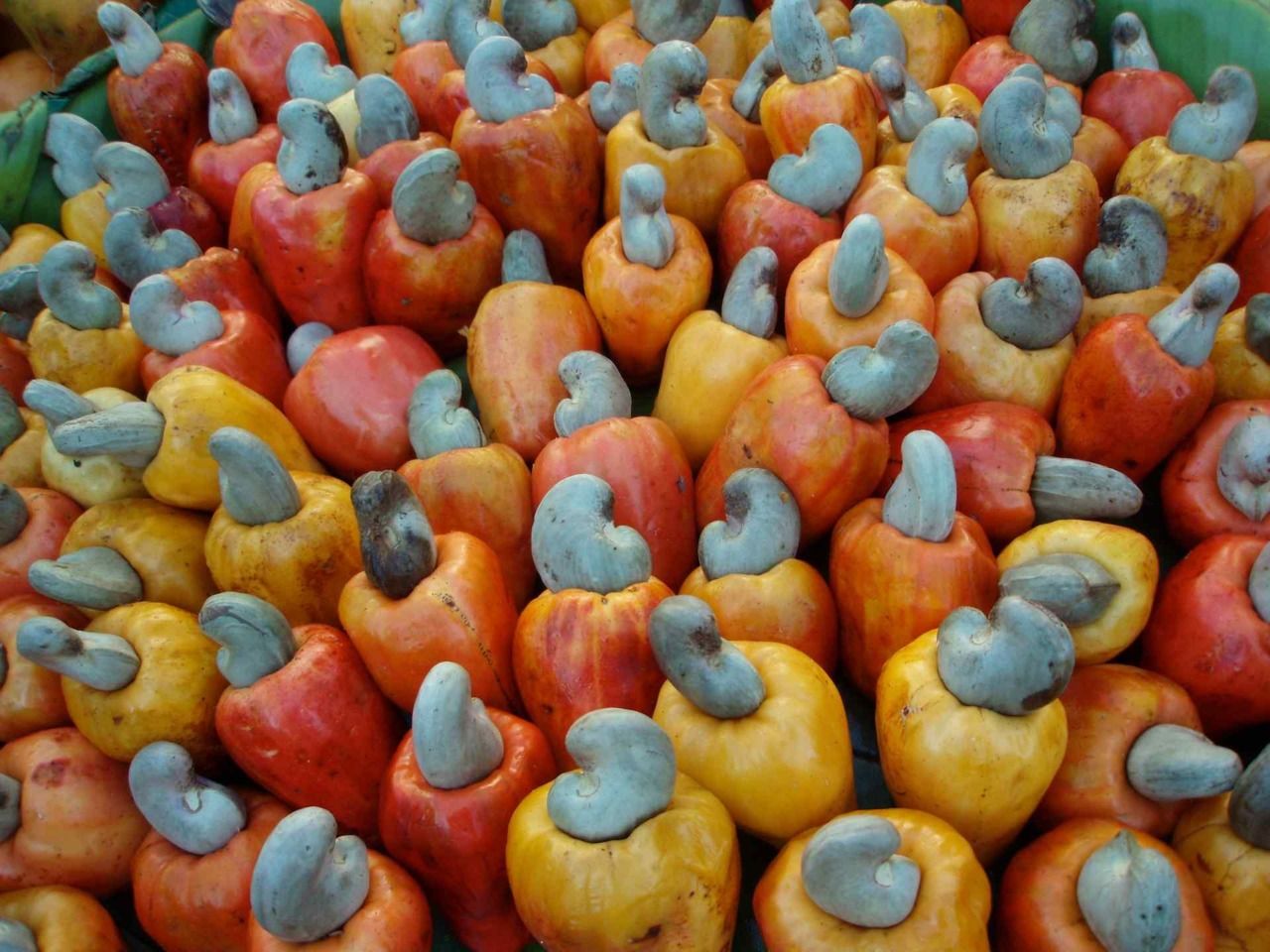
To crown this catalogue of cashew curiosities: the nut covers are poisonous. Morton writes that that the shell contains “a caustic phenolic resin in honeycomb-like cells, enclosing the edible kidney-shaped kernel”. It’s so caustic it can blister skin, and damage your eyes if you burn it and catch some of the smoke. I wonder about the first person to negotiate with the shell and actually get to eat the nut. How persistent must this person have been to endure through all these warning signs – the cashew plant is from the same family as poison ivy – to salvage something edible at the core? Nothing about this situation says, “Oh, lovely, this would go well with some rice.”
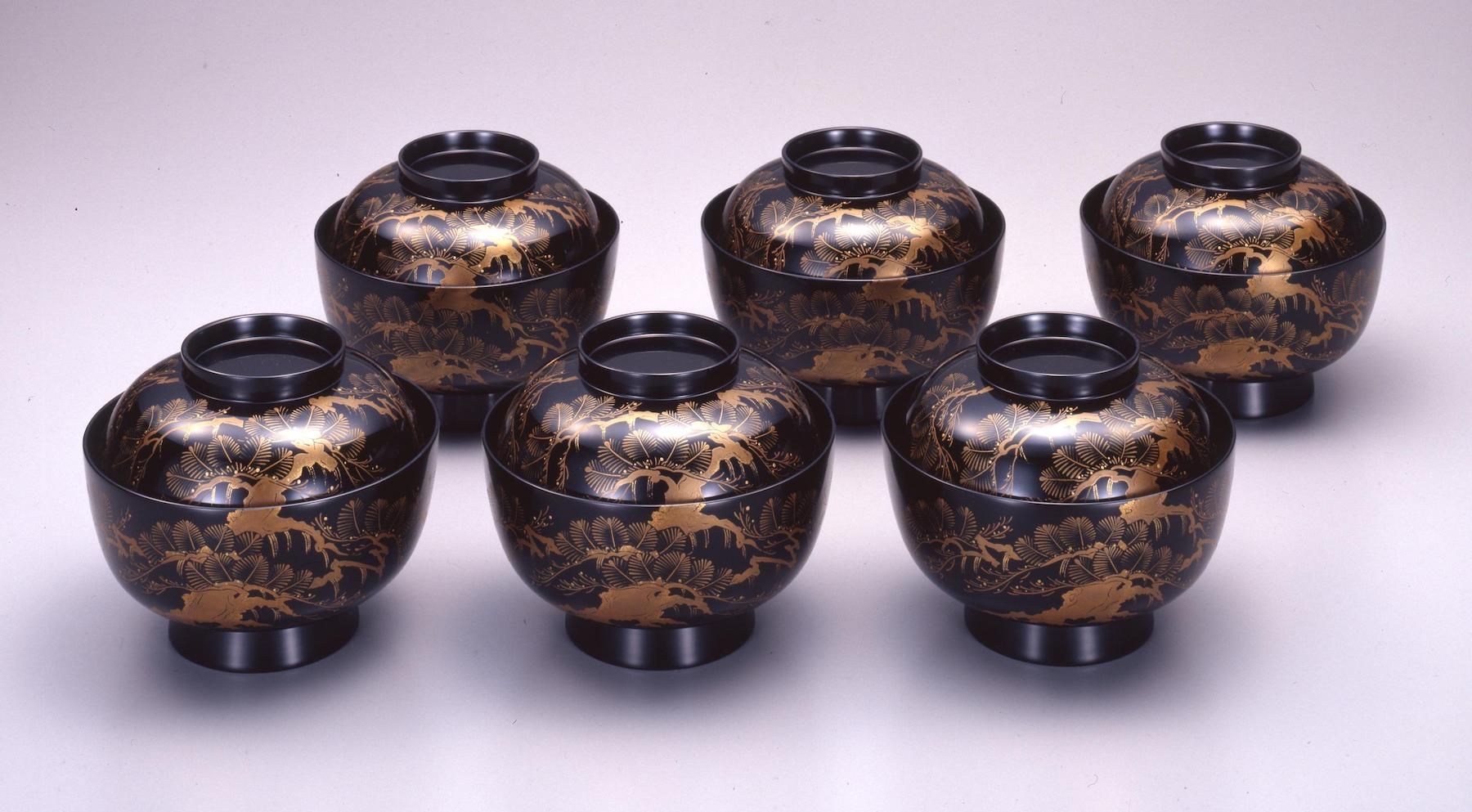
The toxin in cashew shells is called urushiol, a word which comes from the Japanese word urushi (漆), which refers to toxicodendron vernicifluum or the lacquer tree. It’s essentially a chemical traditionally processed to produce varnish. The person who discovered this ought to sit down with the cashew pioneer and exchange notes. “What, so you went through all that, and now… you eat it?”
Nomura jellyfish and their thematic companion, sea salp
Jellyfish already seem bizarre, mysterious creatures at face value, and it doesn’t get any less weird as you delve into some of the details. They have no eyes, heart or brain, and are actually a kind of plankton. They can get huge: the Nomura’s jellyfish (Nemopilema nomurai, or エチゼンクラゲ) can grow up to two metres across and weigh up to 150kg. And they can bloom – swarm an area of ocean or coast in an act of a grand jellification.
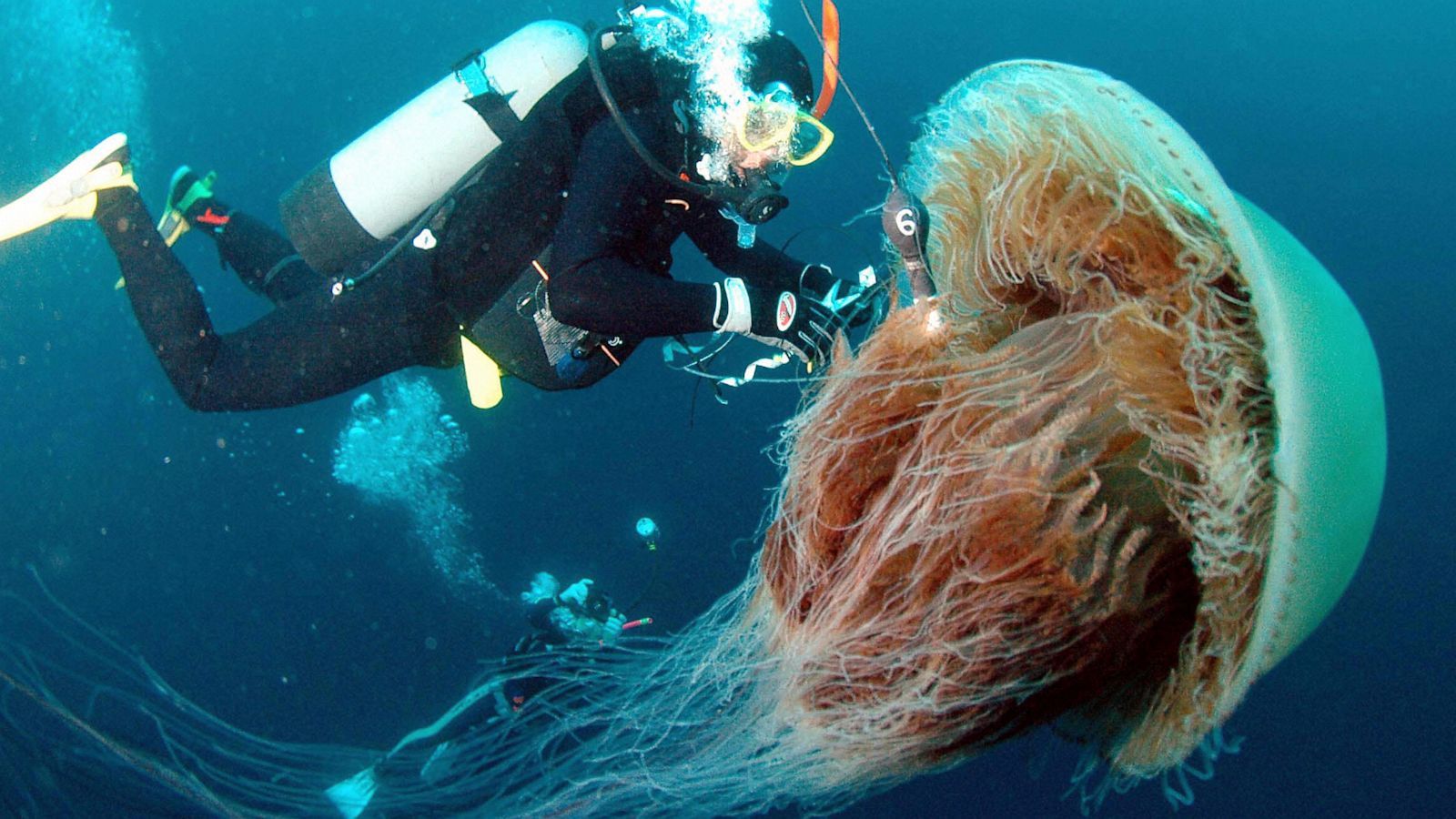
Jellyfish may seem so enigmatic because we lack the ability to engage them with our senses. We can’t hear them – they drift silently through the ocean with a lack of urgency and direction that seems almost sinister to a race obsessed with goals and momentum. They live in the ocean, practically a parallel dimension that most of us never see, so deep and dark it could swallow entire countries; what photos we see are ethereal, like tiny constellations suspended in gel. As for touch, and taste – there are seldom opportunities for a pet or a bite, and some jellyfish are poisonous at that. Might they have a smell? Probably salty. We are basically blind to them in every sense, and they to us.
“Scientists still know little about jellyfish, because the animals are difficult to study. They appear suddenly and unpredictably, as if out of nowhere but in large numbers.” — ABC News
Jellyfish blooms are becoming a more frequent occurrence, which some suggest is a symptom of imbalance in the marine ecosystem. We take too many of the fish, and thus remove competition for the food of the jellyfish, zoo plankton; plus, jellyfish can eat the baby fish, making it harder for fish populations to recover. On top of all that, jellyfish are more resilient to pollution than other marine life, and even benefit from nitrification, which can increase levels of algae and zooplankton.
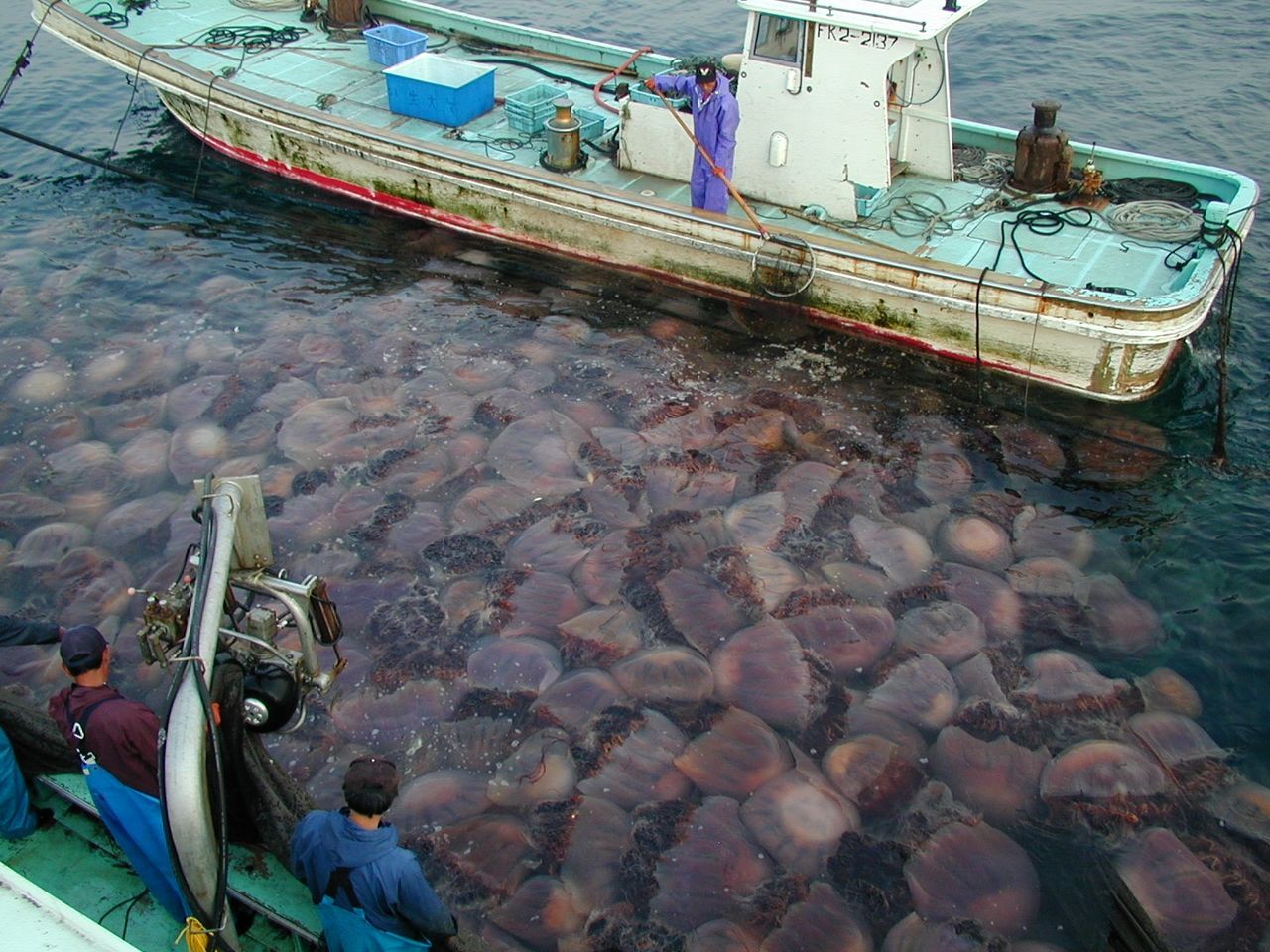
The idea of a swarm of jellyfish already feels a bit... overwhelming, and when they’re up to two metres across and can capsize a fishing boat if caught in the net, that’s pretty scary. But not as scary as gumming up the works of a nuclear power plant. In Oskarshamn, Sweden, they had to shut down one of the largest nuclear reactors in the world because the intake pipes which suck in water to cool the turbines were clogged with moon jellyfish.
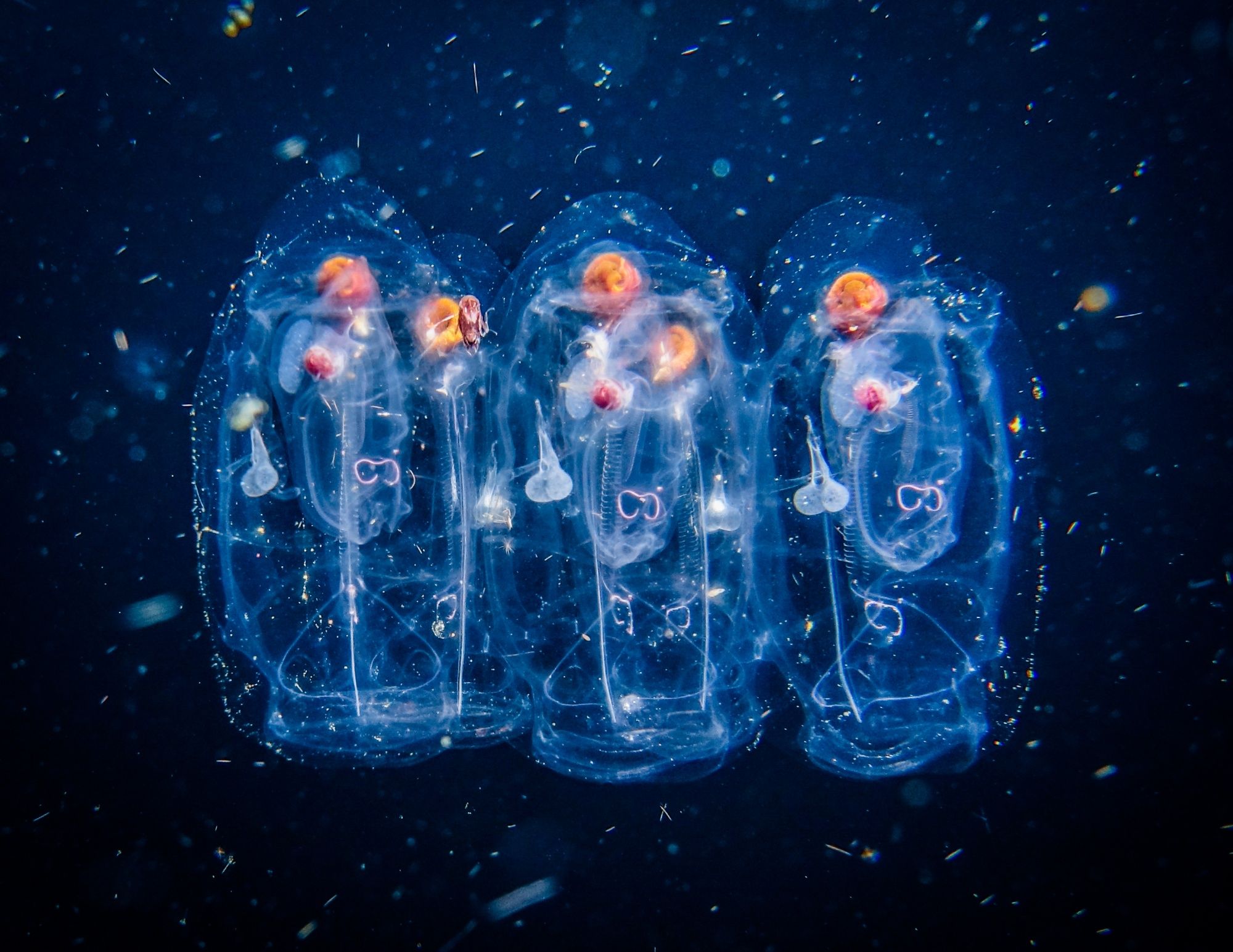
More recently, two South Korean reactors had to shut down temporarily, not due to jellyfish but sea salp, another floating gelatinous mass of the sea. Sea salp can “exist both as individuals and part of an aggregate organism”, forming huge chains and moving in sync. A jelly hive mind. If you’re swimming at the beach and think that the water is starting to feeling a little… thick, you might have just swum through a soup of sea salp.
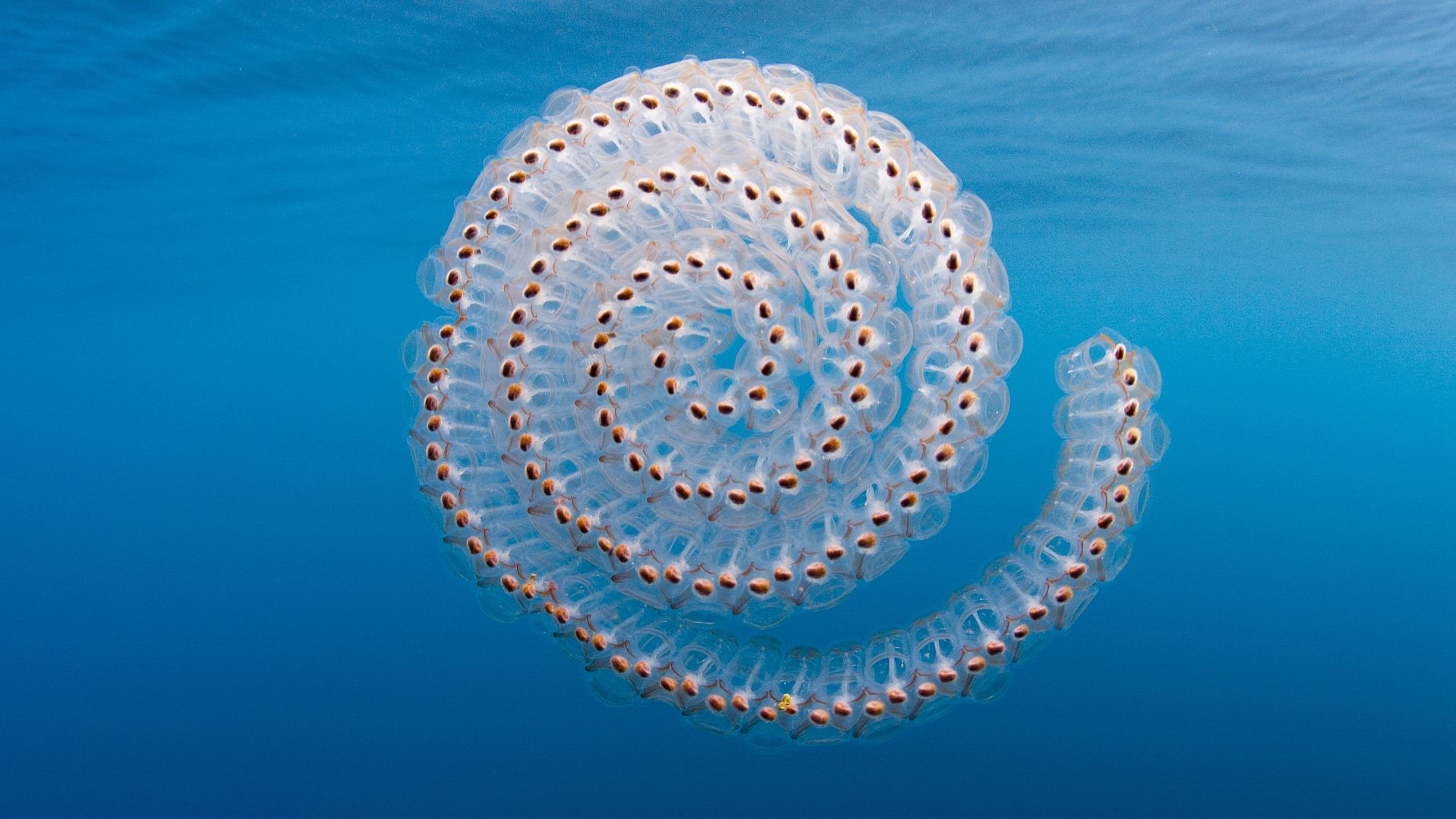
To me, all of this seems so otherworldly, an account from space, not the ocean. That impression might come down to the fact that we’ve borrowed elements of jellyfish, salp and other sea creatures to popularise what “aliens” might look like in movies and comics – tentacles; wet, translucent skin; gooey tissue. I’ve always looked at Space Invaders the video game and thought: jellyfish. I tried to look it up to confirm whether the game design had maritime origins (confirmed: true, to an extent), yet Google seemed more concerned about the question: “Are space invaders vegan?”
Certainly, when you look at colourised pictures of stars and galaxies alongside crisp images of jellyfish and sea salp surrounded by tiny bubbles and sea bits: they start to look pretty similar.
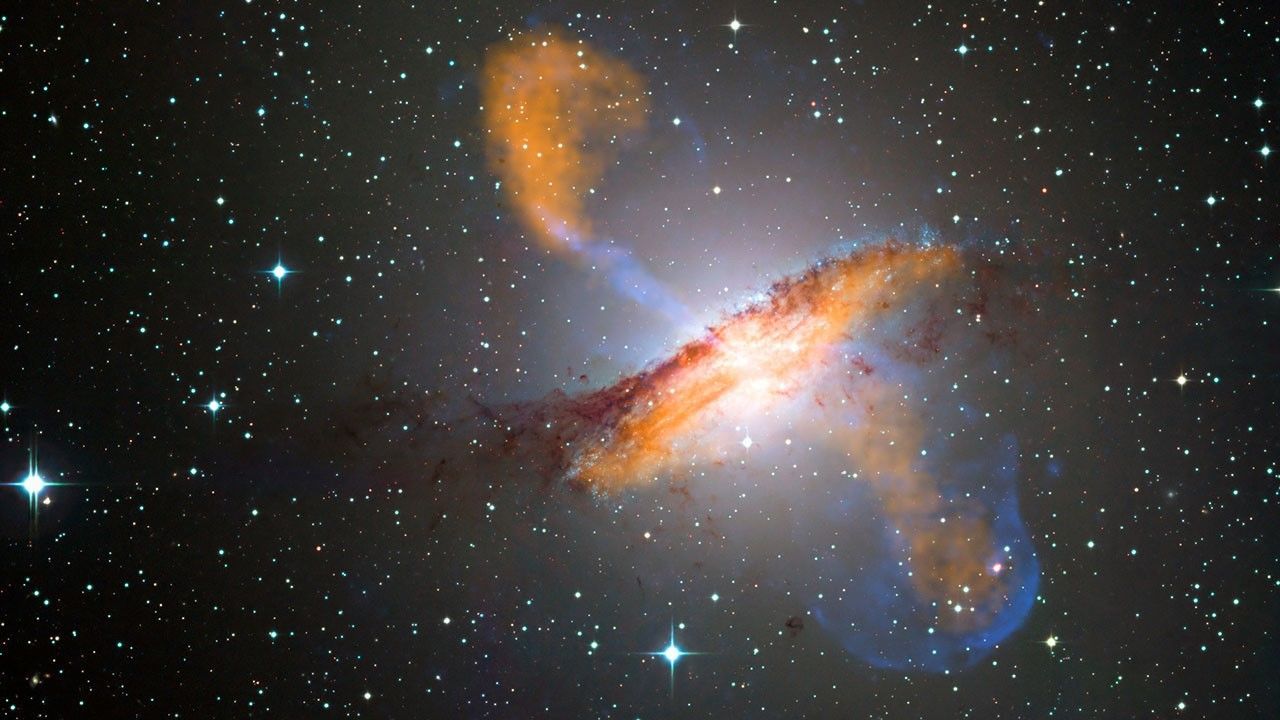
Scobie dune
It started quite casually. A large jar on the corner of the bench, ready to brew some concoction. Some tea, some honey. These are not unusual things. But then Vic tapped into her network to source what I overheard as “scobie” to make “dune”, some kind of drink akin to kombucha. Fermenting was involved. Bubbles. Alchemy.
At least, I thought it was “scobie” and “dune”. I’d only ever heard “scobie” and hadn’t seen it written. I got “dune” wrong because: (a) I was reading a lot of Frank Herbert and had the Dune series on my mind; but also because (b) in New Zealand English we have a tendency to average out our consonant and vowel sounds, to the extent that we don’t distinguish very well between things like “dune” or “june” (or “ferry” and “fairy”; or “bear”, “bare”, “beer”; and so on – there’s a long list).
My initial Google search suggested I was a little off track, and it made me wonder: How do you search for something if you don’t quite know what it is? Contrary to popular belief, the Great Alphabet Algorithm has limits.

Eventually I worked out it’s actually SCOBY, an acronym of: Symbiotic Colony Of Bacteria and Yeast. It’s not a mushroom, even though it’s sometimes called a “Manchurian mushroom”. The scoby is grown on tea and sugar to make kombucha, or green tea and honey to make the lesser known drink, jun – neither “june”, nor “dune”. (You need a scoby to start a scoby, a starter to get started. Where did the first starter start, though?) It acts as both a participant in the fermentation process and a plug: “the scoby seals off the fermenting kombucha from the air and protects it from outside, undesirable bacteria” (thekitchn.com).
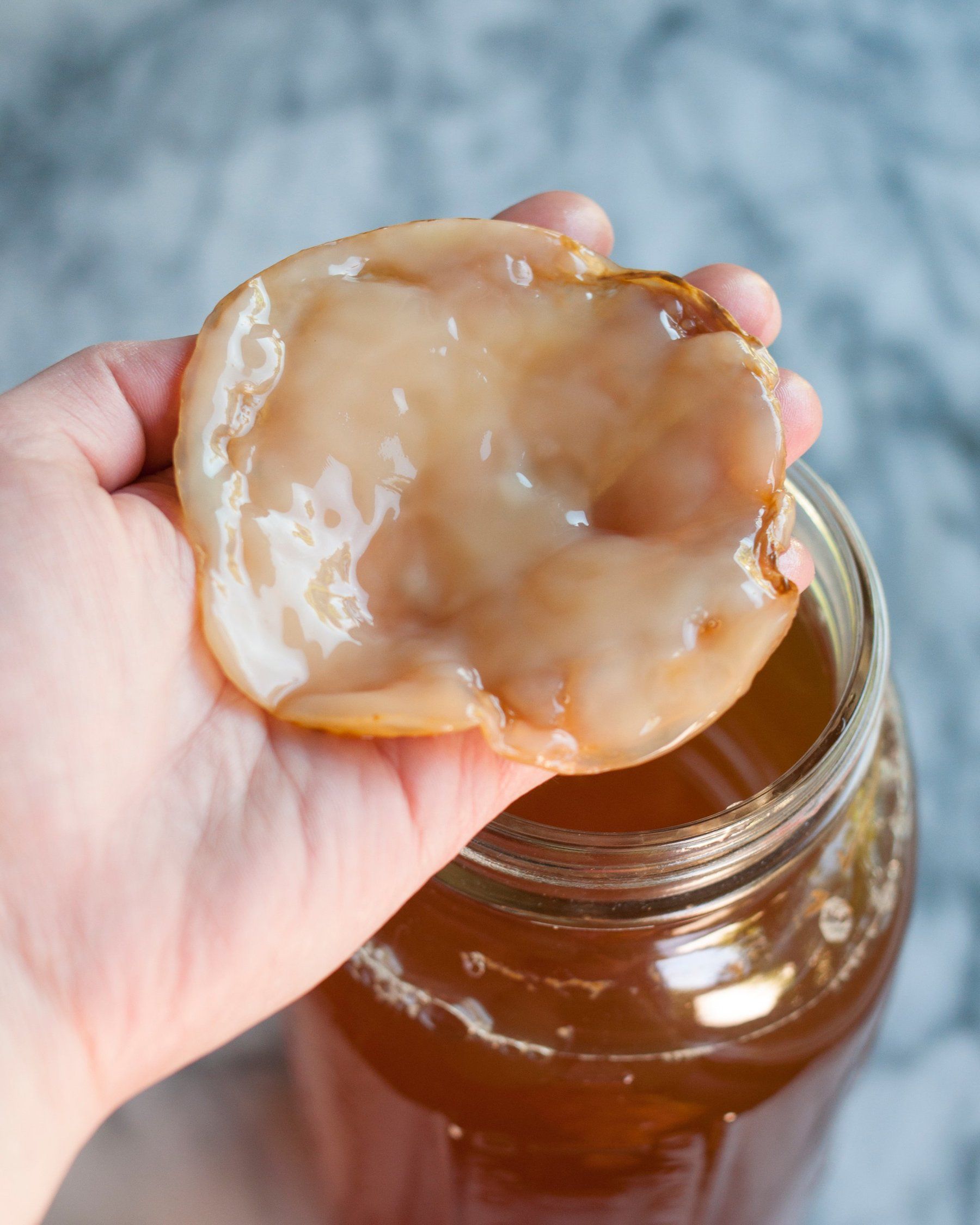
A friend arrived at our place with the thing. The scoby. It looks part jellyfish, part mushroom, part soggy pancake, part fish turned belly up; benign and soft-edged – but also gloopy, crumbly and a little too much like animal tissue. It’s a living thing that looks like an object, or... the other way round? If you want to store multiple scobies (for posterity?) you might need to build what’s called a “scoby hotel” – a metaphor that suggests some form of community and camaraderie amongst fellow scobies.
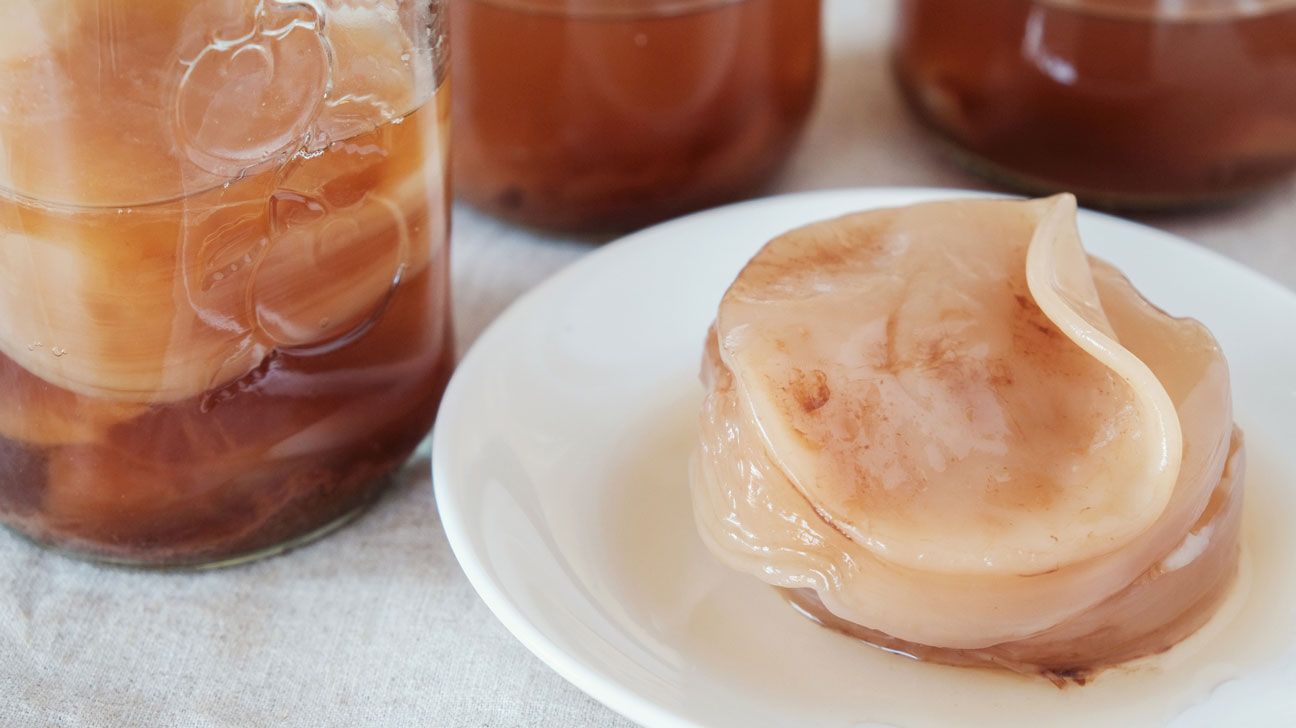
Something quite marvellous emerges out of the strangeness, in the end. Science fiction can have a happy ending. Although the scoby looks like a mutant pancake come to life, although while brewing it looks like we’ve captured a baby alien and stored it in formaldehyde, once the jun is brewed, I’ll attest: it’s delicious – slightly tart, but also sweet and bubbly. You can flavour it with fruits, like feijoa.
Stranger than fiction
It might be that all of these objects and organisms are stranger than fiction to me, but utterly commonplace to you. But then you saw me mention a feijoa. I used to get asked, when I lived in Japan, what my favourite fruit was (the textbook conversation starters could lack imagination), and I'd say “feijoa”. To which my Japanese students, my friends from America, Canada, England, would all say, in one way or another: “What the fuck is that?”
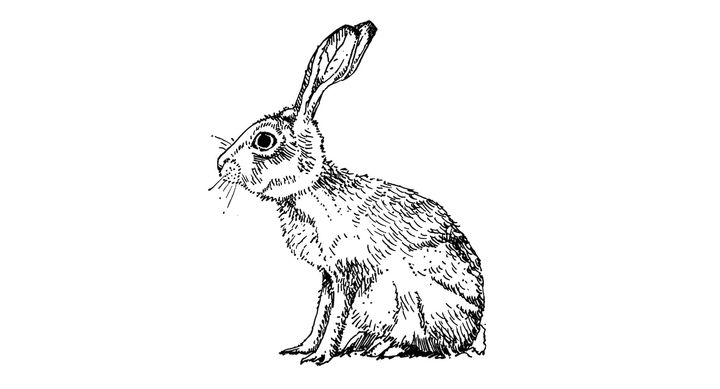
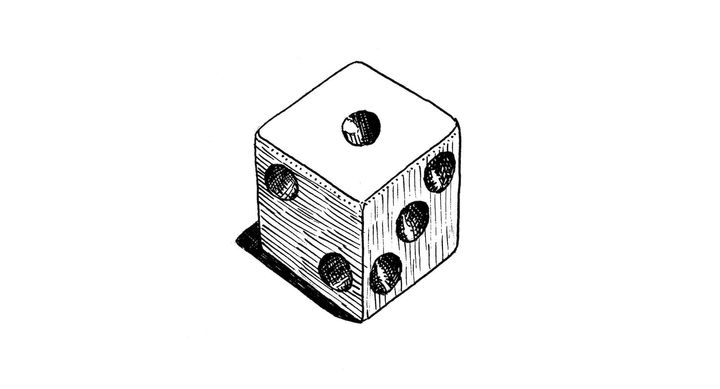
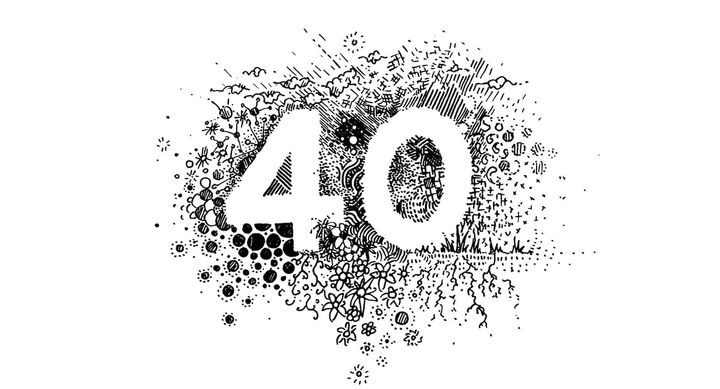
Comments ()